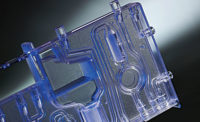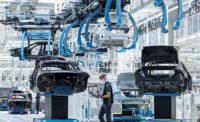According to the Environmental Protection Agency, commercial airplanes and business jets contribute 10 percent of transportation-related carbon emissions in the U.S., and account for three percent of the nation’s total greenhouse gas (GHG) production.
Globally, aviation produced 2.4 percent of total CO2 emissions in 2018. While this may seem like a relatively small amount, consider that if global commercial aviation had been a country in the 2019 national GHG emissions standings, the industry would rank number six in the world between Japan and Germany.
To reduce the environmental impact of commercial aviation, Airbus launched the ZEROe project in 2020 to develop the world’s first zero-emission commercial aircraft by 2035. Airbus believes that hydrogen will be the key to achieving this goal.
There are three ways hydrogen can be used as a power source for aircraft propulsion. One is through hydrogen combustion in a gas turbine. Another is to use fuel cells to convert hydrogen into electricity to power a propeller engine. A third option is a hybrid approach: A hydrogen gas turbine can be coupled with fuel cells instead of batteries in a hybrid-electric architecture.
The benefit of hydrogen combustion is that its most significant by-product is water. And, when powered by renewable energy, the production of hydrogen emits no carbon dioxide.
To demonstrate the capability of hydrogen as a power source, Airbus is developing four concept aircraft. While these concepts come in various size categories, aerodynamic layouts and propulsion system architectures, they all have one thing in common: They are hydrogen-fueled.
One aircraft will be powered by two hybrid-hydrogen turbofan engines. The liquid hydrogen storage and distribution system will be located behind the rear pressure bulkhead.
A second aircraft will be powered by two hybrid-hydrogen turboprop engines, which will drive eight-bladed propellers. Here, too, the hydrogen storage and distribution system will be located behind the rear pressure bulkhead.
The third aircraft is be a blended-wing body concept. The plane’s wide interior opens up multiple options for hydrogen storage and distribution. In this case, the liquid hydrogen storage tanks will be stored underneath the wings. Two hybrid-hydrogen turbofan engines will provide thrust.
The fourth concept aircraft—a high-wing 100-seat regional airliner—features six eight-bladed propellers attached to engine pods. While outwardly resembling turboprop power plants, these pods actually contain hydrogen fuel cells that produce electricity as the result of an electrochemical reaction to power electric motors.
A Jumbo Test Jet
To test its hydrogen propulsion concepts, Airbus will use the A380 MSN1—the first A380 to roll off the production line. Now discontinued, the A380 is the largest and most spacious passenger jet ever built, a size that makes it ideally suited to the role of test platform.
In 2015, the A380 MSN1 was used for ground and flight testing of a powerful new jet engine designed specifically for the A350-1000 aircraft. Now, the A380 MSN1 will take the lead on testing the company’s ZEROe technologies. The goal is to reach a “mature technology readiness level” for a hydrogen-combustion propulsion system by 2025.
“The A380 MSN1 is an excellent flight laboratory platform for new hydrogen technologies,” says Mathias Andriamisaina, Airbus ZEROe demonstrator leader. “It’s a safe and reliable platform that is highly versatile to test a wide range of zero-emission technologies. In addition, the platform can comfortably accommodate the large flight test instrumentation that will be needed to analyze the performance of the hydrogen in the hydrogen-propulsion system.”
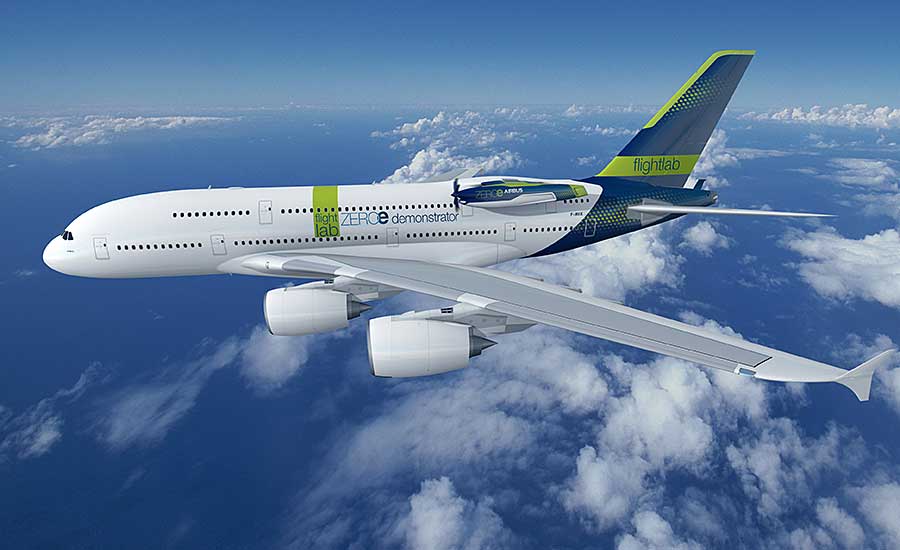
A demonstrator aircraft is fundamental to developing new aviation technology. It is primarily used to test and prove the viability of designs, processes, fuels, materials and equipment, both on the ground and in the air. This information is then used to refine and certify the finished product. Demonstrators also serve to showcase innovation to a wider audience, such as government officials, investors and journalists.
The ZEROe demonstrator will carry four liquid hydrogen tanks in a caudal position, as well as a hydrogen combustion engine mounted along the rear fuselage. The liquid hydrogen distribution system will feed into a conditioning system in which the liquid hydrogen will transform into its gaseous form before it is introduced into the engine where it is combusted for propulsion.
“This isn’t Airbus’ first experience with hydrogen-powered flight,” Mathias explains. “From 2000 to 2002, Airbus was a key partner in the European Union’s Cryoplane research project. Building on these academic inquiries, we’re proud to take the testing of hydrogen combustion to the next level.”
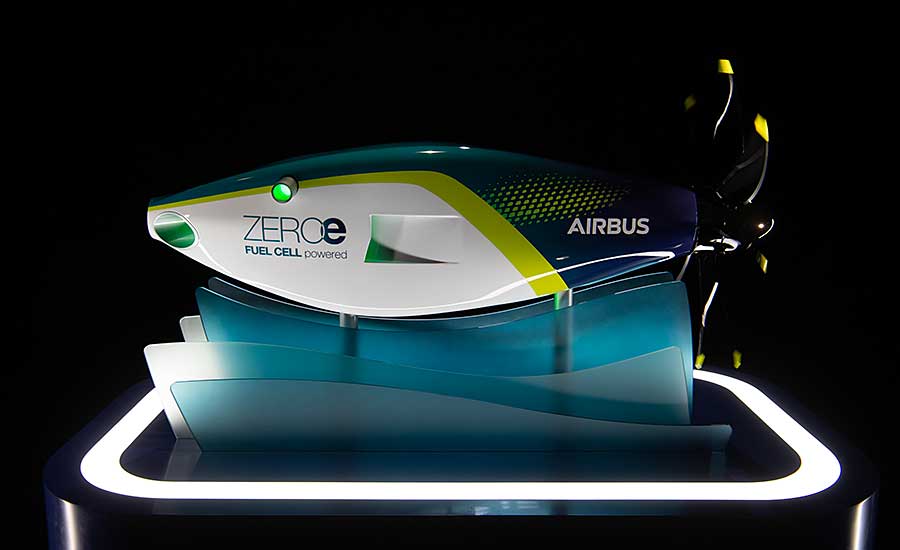
The hydrogen combustion engine is a key part of the ZEROe demonstrator program. Engine manufacturers have been working hand-in-hand with Airbus on demonstrator programs for decades. And the ZEROe demonstrator will be no exception.
CFM International, a joint venture between GE and Safran, is set to develop the hydrogen combustion engine and prepare it for testing. Specifically, the company will modify the combustor, fuel system and control system of a GE Passport turbofan to run on hydrogen. The engine was selected due to its physical size, advanced turbo machinery, and fuel flow capability.
Each component—the hydrogen tanks, hydrogen combustion engine and liquid hydrogen distribution system—will be tested individually on the ground. Then, the complete system will be tested first on the ground and then subsequently in flight. The first flight is expected to take place in the next five years.
Power From Fuel Cells
Last November, Airbus revealed that it is developing a hydrogen-powered fuel cell engine. The propulsion system is being considered as a potential option for powering a zero-emission passenger plane.
Airbus will start ground and flight testing of this fuel cell engine architecture onboard the A380 MSN1 demonstrator aircraft towards the middle of the decade.
“Fuel cells are a potential solution to help us achieve our zero-emission ambition, and we are focused on developing and testing this technology to understand if it is feasible [for powering] a zero-emission aircraft,” says Glenn Llewellyn, vice president for zero-emission aircraft at Airbus. “At scale, and if the technology targets were achieved, fuel cell engines may be able to power a 100-passenger aircraft with a range of approximately 1,000 nautical miles. By continuing to invest in this technology, we are giving ourselves additional options that will inform our decisions on the architecture of our future ZEROe aircraft, the development of which we intend to launch in the 2027-2028 timeframe.”
When stacked together, hydrogen fuel cells increase their power output, allowing scalability. In addition, an engine powered by hydrogen fuel cells produces zero nitrous oxide emissions or contrails, thereby offering additional decarbonization benefits.
Airbus has been exploring the possibilities of fuel cell propulsion systems for aviation for some time. In October 2020, Airbus created Aerostack, a joint venture with ElringKlinger, a company with more than 20 years of experience as a supplier of fuel cell systems and components. In December 2020, Airbus presented its pod-concept, which included six removable fuel-cell propeller propulsion systems.
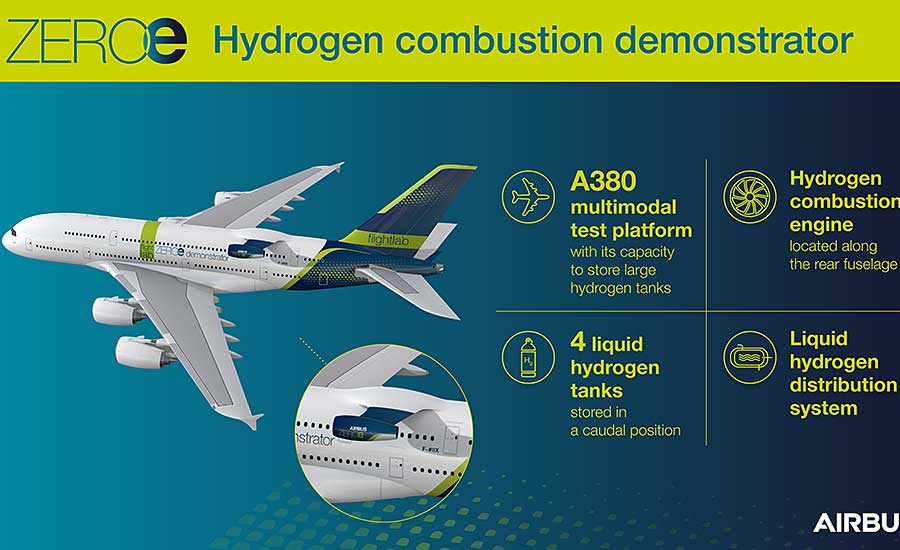
For its latest proof-of-concept demonstrator, liquid hydrogen from the cryogenic tank is converted into a gaseous state. It is then distributed to the fuel cell via supply lines running from the tank and through an external “stub” aerodynamic and load-bearing support structure to the engine pylon interface.
From there, the gaseous hydrogen enters the fuel cell inside the pod, where dioxygen (O2) molecules are also supplied by a controlled flow of air taken from the surrounding atmosphere. The resulting reaction inside the fuel cell produces direct electrical current, which is subsequently converted into alternating current by the means of inverters. Electric motors near the front of the pod then convert the electrical power into mechanical power by communicating torque to a reduction gearbox. At the end of the propulsion chain, the propeller provides the thrust.
The thermal energy generated by the fuel cell needs to be conveyed by a liquid cooling system to heat exchangers, where it is dissipated into the ambient air. Water, produced as a by-product of the electrochemical reaction, is expelled from an outlet at the back of the pod.
The A380 MSN1 was the obvious choice as host for the hydrogen fuel-cell engine demonstrator. “It has plenty of space internally, so there are no constraints in terms of accommodating everything we need and giving us the ability to test multiple configurations,” says Mathias Andriamisaina, head of ZEROe demonstrators and tests at Airbus.
“In terms of aerodynamics, the A380 is a very stable aircraft. So the pod attached to the rear fuselage via the stub doesn’t pose much of an issue. Furthermore, the airflows from the pod and its propeller do not affect the airflow over A380’s tail surfaces,” he adds.
The overall concept was to make the minimum amount of structural modification inside the A380. “We are just reinforcing two frames of the fuselage and then fitting this stub externally. Then we are fitting a specially adapted pylon to attach the structure of the pod onto this stub. Overall it will be able to support high sustained static and dynamic loads,” he notes.
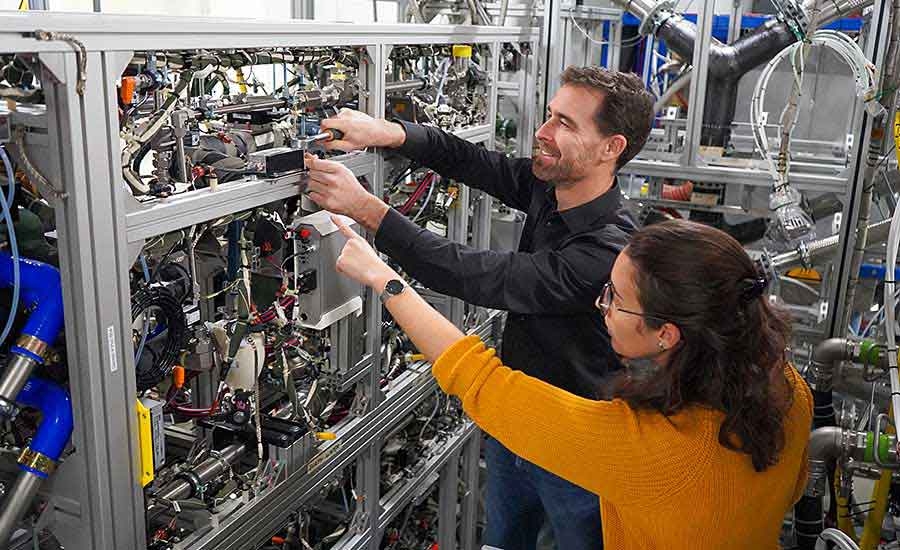
While most of the equipment is installed outside the aircraft, inside the aircraft there is what the team refers to as the “tent,” a 10-meter long, 4-meter wide housing with a parabolic cross-section that will be crafted out of carbon fiber by an Airbus Atlantic team at the Technocentre de Nantes. Inside this structure can be housed up to four cryogenic tanks containing the liquid hydrogen. During flight tests, the air inside the tent will be at the same pressure as outside the aircraft. In other words, the equipment installed inside this tent will only see the atmospheric unpressurised environment. This includes the hydrogen supply lines from the tank, which are routed directly from the tent to the stub and then to the externally mounted pod.
“Using this approach avoids the risk of any hydrogen entering into the A380’s main pressurized interior, because all the hydrogen routings from the tank will also be located inside our protective tent environment. There are also emergency venting lines, so we can expel the hydrogen out of this emergency line if needed,” explains Mathias.
Everything concerning the distribution center and the motor controller unit are being produced internally, says Mathias. “In addition, the propelling system and the gearbox associated and the pitch control is developed by our own Airbus Helicopters and Defense and Space colleagues. It’s the first time that Airbus is creating such an engine ourselves. It’s a big challenge,” he adds.
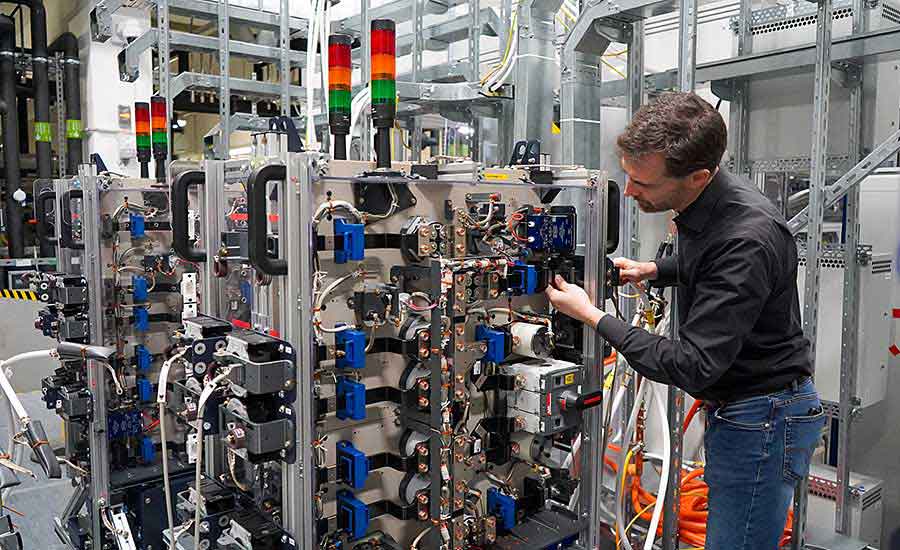
Other firsts for Airbus’ include the adoption of a high-voltage distributed electrical architecture for up to 1,000 VDC and also the creation of a bespoke engine control system. This will translate the thrust commanded by the crew into the actual shaft power.
Extensive ground testing activities are already well underway. Examples include the electrical benches, thermal management systems and several fuel-cell integration benches. From 2024, there will be additional integrated test benches, such as a fuel cell system integration bench featuring a 200-kilowatt fuel-cell stack and a climatic chamber; a functional integration bench for the engine control system to validate real interfaces and actuators; and a propeller integration bench. The latter will explore propeller pitch actuation gearbox integration, gearbox endurance, and partial blade-release tests.
In parallel, the newly developed power centers and power converters for the fuel cell flight demonstrator will be connected to the A380 “iron bird” test rig, so they can be integrated with the legacy A380 ATA Chapter 24 hardware for electrical power.
Later that year, there will also be an “iron pod.” This test rig will bring together for the first time various key ingredients: 800 kilowatts of fuel cell power to two electric motors; the motor control units; the gearbox; the new high-voltage electrical distribution and conversion system; a flight air supply and the liquid cooling system.
By 2026, the teams will be able to test the entire system in the integrated test bench. This will comprise the flight-standard fuel cell pod, complete with all its various systems and the propeller.

Simulation Software Aids Design
Developing an emission-free commercial aircraft is a massive undertaking, even with a 12-year timetable. Simulation software is helping Airbus engineers save time and avoid dead ends.
Specifically, Airbus is using SimSolid software from Altair to perform structural analyses on fully featured CAD assemblies within minutes.
“Altair SimSolid is the premier simulation technology for engineers, designers, analysts and manufacturers. It eliminates geometry preparation and meshing, which are the two most time-consuming, expertise-extensive, and error-prone tasks in conventional structural simulations,” says Sam Mahalingam, chief technology officer at Altair.
Altair SimSolid will save Airbus’ design and engineering teams time, money and hassle. Airbus chose SimSolid because it can reduce elementary part analysis delivery times from days to minutes, helping to cut complex assembly delivery times from several months to less than one week in some cases. Additionally, SimSolid’s intuitive, easy-to-implement operations and interface lets engineers work without needing to clean geometry or prepare models beforehand. SimSolid also allows Airbus’s design and engineering teams to explore more design iterations in shorter timeframes, which will expedite project time lines and deliver sustainable innovations quicker.
“By using Altair SimSolid, our teams can explore more design possibilities in a simple, easy-to-implement environment,” says Christophe Brand, head of airframe methods and tools at Airbus. “By not requiring our teams to clean geometries beforehand, Altair SimSolid helps us significantly reduce delivery times and build better products.”
To learn more about Airbus’s ZEROe global initiative, click here.
To learn more about Altair SimSolid, click here.
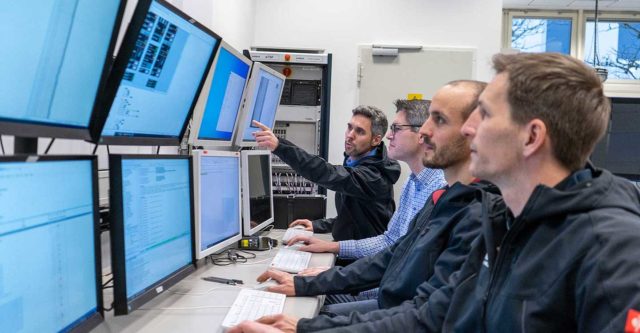



.jpg?height=300&t=1725544628&width=300)

